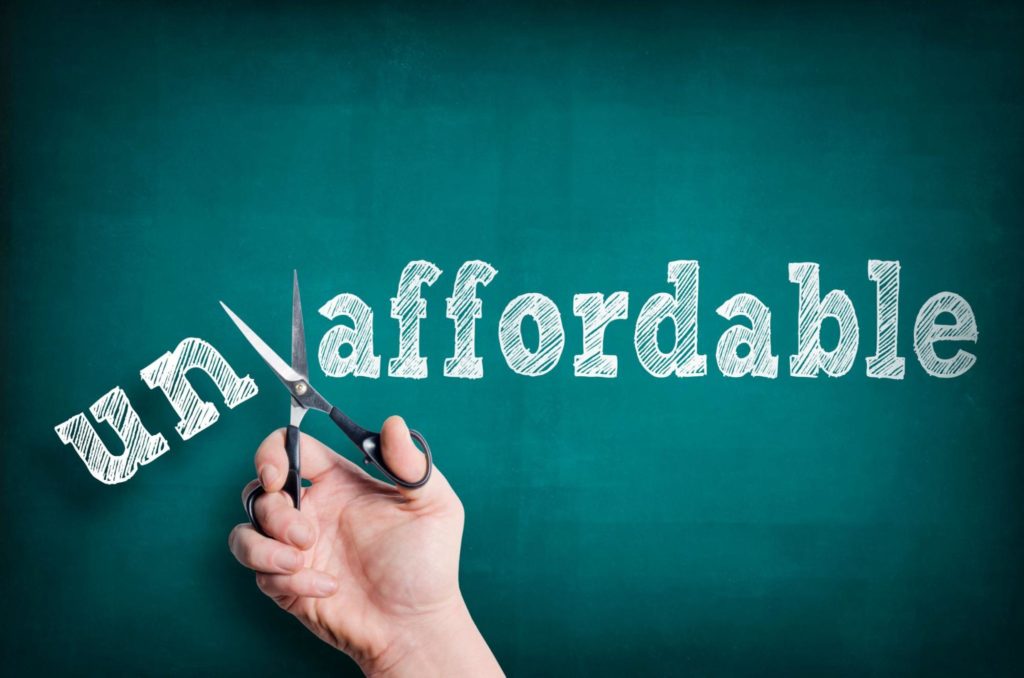Historical Context
Discussion of a modern housing crisis demands that we consider former housing crises—namely, the 2008 housing crisis, when the securitization of residential mortgages produced a bubble that blasted a 1.6 trillion-dollar hole in the American economy.
In the late-1900s and throughout the early aughts, Wall Street’s desire for mortgage backed securities, combined with disreputable mortgage lending practices, drove up home prices across the country.
Faced with variable loan interest rates that couldn’t be paid, borrowers defaulted on their mortgages, which tipped the entire banking system toward insolvency, sparking The Great Recession.
We bring this up only to draw the connection between our current housing crisis and the 2008 crisis. To wit, the current housing crisis, which is a housing supply shortage, has its roots in the Great Recession.
The Covid-19 pandemic, which has laid bare the structural inequality at the heart of American real estate, creating a number of policies and policy ideas, from eviction moratoriums to emergency rental assistance, is merely part of a broader trend that has been decades in the making.
As Matthew Murphy, the Executive Director of the Furman Center for Real Estate and Urban Policy at NYU, explains: “One of the most prominent issues in pre-pandemic America was supply shortages. That has carried over [during the pandemic], but we already had evidence of supply shortages heading into the pandemic.”
In short, the modern housing crisis began in 2008, if not earlier. As Murphy elaborates, “the context of this current housing crisis is that we were still recovering from the 2008-2009 foreclosure crisis.”
We currently have an “underbuilding gap” of between 5.5 and 6.8 million housing units, which is the direct result of the 2008 foreclosure crisis. While Covid-specific supply chain snarls in lumber, for instance, have exacerbated an already bad situation, the pandemic did not cause our current housing situation.
Following the 2008 foreclosure crisis, there was a recognition on the part of lawmakers in the domain of housing policy that home ownership, while a laudable goal, might not be the best route for some Americans.
In order to avoid another 2008, mortgage lenders needed to become more diligent about who received loans. Conventional factors such as down payments and credit scores came back into fashion in assessing whether individuals could pay their mortgages.
One might expect that post-2008 housing construction would reflect the fact that not everyone could own a home; one might expect an uptick in the building of multifamily rentals properties.
Although, perversely, real estate development post-2008 crisis concentrated instead on restoring the residential housing sector and the construction of high-income apartment complexes.
In short, housing undersupply in affordable multifamily units became more acute than undersupply in residential housing, despite the recognition that we needed less of the latter and more of the former.
The Rent Is Too Damn High
The pandemic and Covid housing crisis made an untenable situation in the rental market even worse: temporary workforce furloughs and jobs led to millions of Americans being unable to pay their rent. The federal eviction moratorium was a much needed Bandaid in a crisis, but it was just that, a Bandaid affixed to a much larger problem—a problem that will continue to arise in our post-pandemic world whenever the economy enters a trough.
The real problem in housing today, to put it bluntly, is that the rent is too damn high because there is an undersupply in affordable housing.
You may not remember New York’s gubernatorial race in 2010, but the debate featured one Jimmy McMillan, representing the “Rent Is Too Damn High” Party.
Although McMillan was eventually turned into a meme, and became the butt of political pundits’ jokes, his Party’s platform seemed as sound to us then as it does today.
(The rent, unfortunately, is still too damn high, presumably because Mr. McMillan never made it to Albany.)
And the rent has been this way for decades. As researchers from the Aspen Institute, Ingrid Gould Ellen, Amy Ganz, and Katherine O’Regan, point out between “1960 and 2018, the real value of the median renter’s household rent increased 85 percent, while the median renter’s income increased by just 18 percent.”
The situation for low-income renters is even more dire. We desperately need a greater number of affordable multifamily units.
Last December’s release of the Federal Housing Finance Agency (FHFA) affordable housing goals gives Fannie Mae and Freddie Mac the objective of originating loans for roughly 385,000 additional affordable housing units in 2021.
The underbuilding gap of at least 5.5 million units mentioned above, however, will need to be addressed at some point. The problem is that private construction companies seem intent on continuing to build single-family middle-to-high income housing and cost-prohibitive rental housing.
In short, 385,000 affordable housing units is simply not enough to address the housing supply shortage in this country. We need an honest assessment of who needs housing in this country, and how to make that housing affordable and accessible for those who most need it.
The Affordable Housing Crisis in Texas
While the affordable housing crisis is nationwide, focusing on one particular geographic region helps clarify the issue and the stakes.
In Texas, rental prices in San Antonio, Houston, and Dallas jumped by 16.5%, 16.1%, and 18.7% respectively from 2008-2019. To put these numbers in perspective, the increase in New York City and Los Angeles rental market were 14% and 17% over the same period.
We often misconstrue the affordable housing crisis as belonging to expensive cities on the coasts, but as we can see, rentals in the Dallas-Fort Worth area have increased by a greater percentage than both NYC and LA.
Federal housing assistance programs, such as the Housing Choice Voucher program and the Low Income Housing Tax Credit (LIHTC), can help offset the price of housing for low-income families, but these programs do not always work in practice.
Under Texas law, nothing prohibits landlords from discriminating against those renting a property with a Section 8 Housing Choice Voucher.
Oftentimes, federal housing assistance can be supplemented by state and local programs that help low-income families secure adequate rental properties.
While it is easy to get discouraged about the United States affordable housing crisis, it is important to recognize that this is a problem decades in the making, and that persistence is the best remedy to go about solving it.
At Armada Analytics, we pride ourselves on understanding the ins and outs of federal and state housing assistance programs, and we will continue to hone our expertise in affordable housing underwriting programs in order to be a trusted partner for our clients as the need for affordable housing financing continues to be the focus of the modern housing crisis in Dallas and nationally.







